Novel set in KENT, LONDON, PARIS
Chatting Lanzarote with author Isobel Blackthorn
13th May 2017
#TalkingLocationWith…. Isobel Blackthorn, author of The Drago Tree, shares her insights into Lanzarote.
When I first started writing fiction in 2010 I knew I wanted to set a book on Lanzarote. I used to live there in the 1980s. I left suddenly and in difficult circumstances, and I hadn’t been back since. It was twenty-five years later in 2015 that The Drago Tree was published. Now a Spanish translation of my book is being released this year by the same publisher, and I’ve written a sequel, which is coming out in 2018.
I never thought I’d have the chance to return to the island I fell in love with in my twenties. It was my publisher who made it possible when she offered–even though we hadn’t met–to travel with me half way round the world from Australia to see for herself an island she’d never heard of until she read my book.
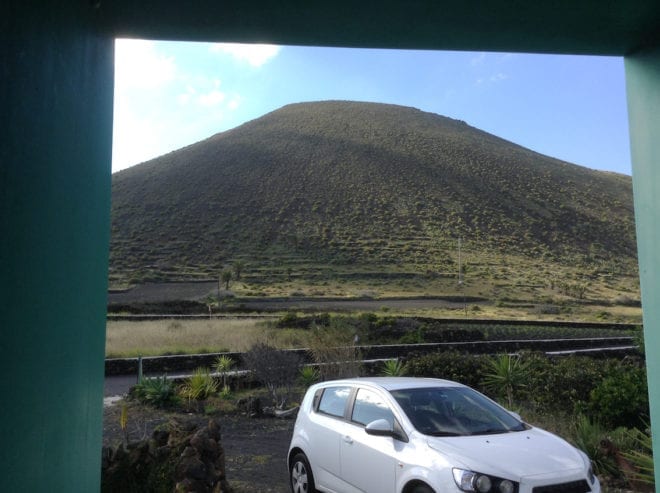
The view from the door
We stayed in a charming old farmhouse on the edge of Máguez, a village in Lanzarote’s northern tip, situated near the edge of the ancient lava flows of La Corona. Our front door opened out onto another volcano, La Corona’s sister, a towering cone rising hundreds of metres, just a short walk away. I chose the farmhouse, with its metre-thick walls and cavernous rooms, because I wanted to set the sequel there. It’s one of numerous holiday lets in villages away from the big hotels. From our remote location we explored the island, unexpectedly following in the footsteps of my protagonist.
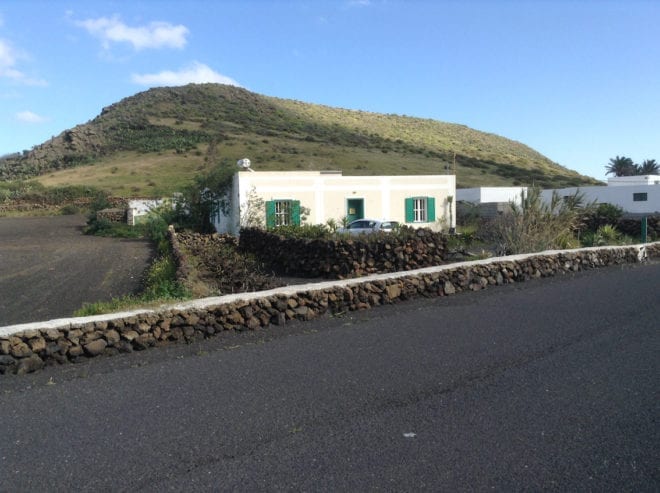
Standing at the edge of El Risco, a dizzying high cliff stretching along the western coast, is a perfect way to absorb the island’s magnificence, and to appreciate the hard lives of the local women, who would climb the cliff laden with fish and salt to trade for water, potatoes and legumes. An ancient salt works is located at the cliff bottom. The entire cliff is accessible to hikers, and there are several walled viewing areas, but if you don’t have a head for heights it’s best to head for Mirador del Rio, where you can view the spectacular panorama behind glass.
To gain a sense of the dramatic history of the island, a tour of the famous caves, Cuevas de los Verdes is a must, although not for the claustrophobic. The caves are deep, formed out of gas bubbles in the molten lava, and strewn with vast basalt boulders. It is down here that the islanders would hide from marauding pirates. The most notable attack took place in 1618, when infamous Álgerian corsairs Tabán Arráez and Dutch-born Solimán pulled in at the island’s port, and sacked the then capital Teguise. Nine hundred petrified Conejeros fled across the lava field to hide in these caves. Today the caves are accessed via a narrow road cut into the lava, making for an astonishing, eerie drive.
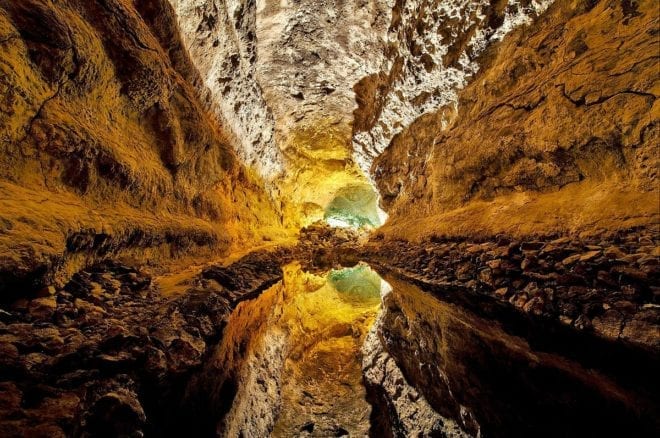
Dropping by El Amanecer, one of the many restaurants in the nearby fishing village of Arrieta, is the perfect way to finish off the day. The menu is simple, the food fresh, and partaking in a bowl of gofio ice cream, a must. Gofio is a traditional staple made from ground toasted maize. The ice cream is a local treat for the children, and you might want to adulterate it, like I did, with a glass of brandy.
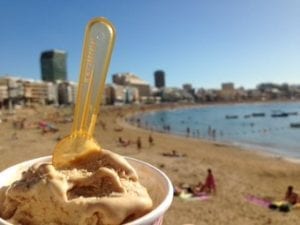
Gofio Ice Cream (Twitter)
I named my book after an ancient tree. Drago trees are a type of dracaena. They can be found dotted about the island, but the best display is at the Arrieta roundabout, where a planting of them skirts a wind sculpture created by Lanzarote’s ambassador and mascot, the late César Manrique. His artistic and architectural prowess, along with his concern for preserving the island’s fragile environment, has recently earned Manrique a national holiday in honour of his birth.
Lanzarote has changed a lot since I was last there. The island, with its warm sunny climate and breathtaking otherworldly views, has become a tourist mecca, especially for the Brits. Yet the island remains largely unspoilt, and the people are just as welcoming. The locals have oodles of civic pride, manifesting in an annual calendar filled with festivals and celebrations. I wrote The Drago Tree, and its sequel, to pay my respects to this magnificent part of the world.
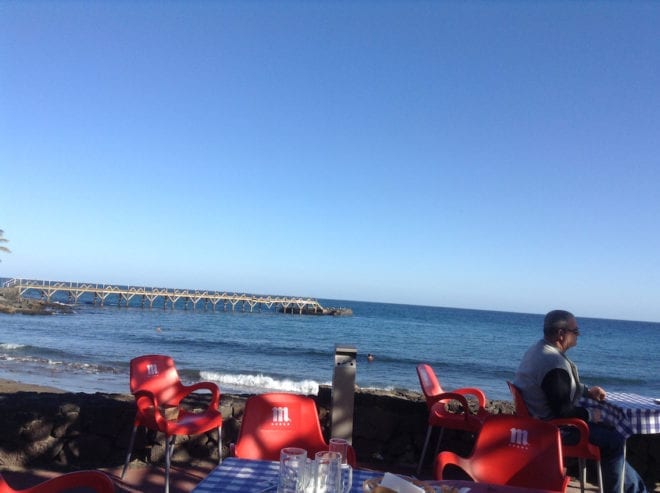
Arrieta
Thank you so much to Isobel for sharing her tips for a visit and background research. You can follow her on Twitter, Facebook and via her website and of course you can buy her book here!
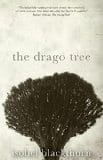 Come and join team TripFiction on Social Media:
Come and join team TripFiction on Social Media:
Twitter (@TripFiction), Facebook (@TripFiction.Literarywanderlust), YouTube (TripFiction #Literarywanderlust), Instagram (@TripFiction) and Pinterest (@TripFiction)
For more books set in Lanzarote, just click here!


 Please wait...
Please wait...

Oh, great article! I love lanzarote too so will definitely be looking into those links, thank you!